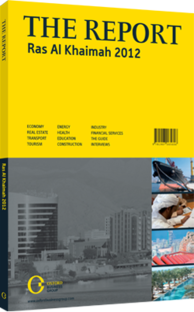OBG talks to Sheikh Mohammed bin Saud Al Qasimi, Crown Prince of Ras Al Khaimah

Interview: Sheikh Mohammed bin Saud Al Qasimi
What diversification strategy is being undertaken, particularly with regards to enhancing RAK’s attractiveness to foreign investors?
SHEIKH MOHAMMED BIN SAUD AL QASIMI: RAK’s economy is already diversified and the emirate is aiming to expand further. The economic diversification programme implemented in RAK has created a fairly mixed economy, and the government has strived to espouse an economic vision of openness. This will help RAK become more significant in a rapidly evolving and interconnected global economy. We are concentrating on developing tourist attractions, and, at the same time, we are promoting industry. We have industrial parks that allow companies to share the success of existing industries.
We are seeking to achieve sustainable growth through attracting investments, taking full advantage of RAK’s competitive advantage in terms of its geographic location. Being close to the Strait of Hormuz allows for maritime bulk trade and tourism development. The mountains are also a great asset for the tourism and industrial sectors, particularly in the field of cement and building materials.
Today, efforts are under way to make RAK an investor-friendly destination. RAK is a first-choice location for investors, thanks to business-friendly legislation that gives the investor the security to locate here. For investors, RAK is accessible, corruption-free and competitive in terms of cost. To attract more foreign investors, it is essential to market the emirate abroad, and today, we are looking to develop relations with countries that are more open to making investments.
Which sectors will provide RAK with the greatest growth potential in the coming years?
SHEIKH MOHAMMED: I am particularly keen to see the tourism and industry sectors expand, as I believe these two areas will provide RAK with the best growth potential in the coming years. With regards to the tourism sector, we have already set up the Tourism Authority, and we are trying to streamline all hotels, restaurants and services offered to visitors. We want tourists to visit RAK more than once, and I am confident the emirate can become a number-one destination as it possesses many attractions: we have the UAE’s longest stretch of coastline, the Hajjar Mountains, year-round sunshine and a history stretching back 7000 years. Located close to the regional economic centre of Dubai, RAK differs as it is smaller and more traditional. It is an attraction for those wanting to see another side of life in the Arabian Peninsula. Hotel capacity is increasing, and the airport is being expanded to match tourism sector growth. Great potential also lies on Marjan Island, where the Real Madrid Island Resort is scheduled to open in 2015.
We have not forgotten the main GDP contributors such as industry either. Given that we already have established players in the market, more entrants are looking to come to the emirate and share the success of its expansion. Moreover, we also aim to ensure development is environmentally friendly and we have a range of industry and tourism projects specifically designed with ecology and habitat protection in mind.
How would you assess RAK’s relationship with the other emirates as well as the wider region?
SHEIKH MOHAMMED: While all of the emirates are different, they complement each other in various ways. When a visitor comes to the UAE, they see the diversity of the country’s topography and the beauty of that diversity. On an economic level, with each emirate’s economy expanding, the Gulf states have become better business partners for each other – not just locally but globally. Furthermore, as countries surrounding the UAE become richer, they will provide us with more opportunities to do business, which I regard as a motivation to develop the whole of the UAE. Each emirate has a responsibility in this expansion, and what RAK has to offer is an advantageous fiscal policy, a strategic geographic location, political stability and a competitive business environment.
You have reached the limit of premium articles you can view for free.
Choose from the options below to purchase print or digital editions of our Reports. You can also purchase a website subscription giving you unlimited access to all of our Reports online for 12 months.
If you have already purchased this Report or have a website subscription, please login to continue.

